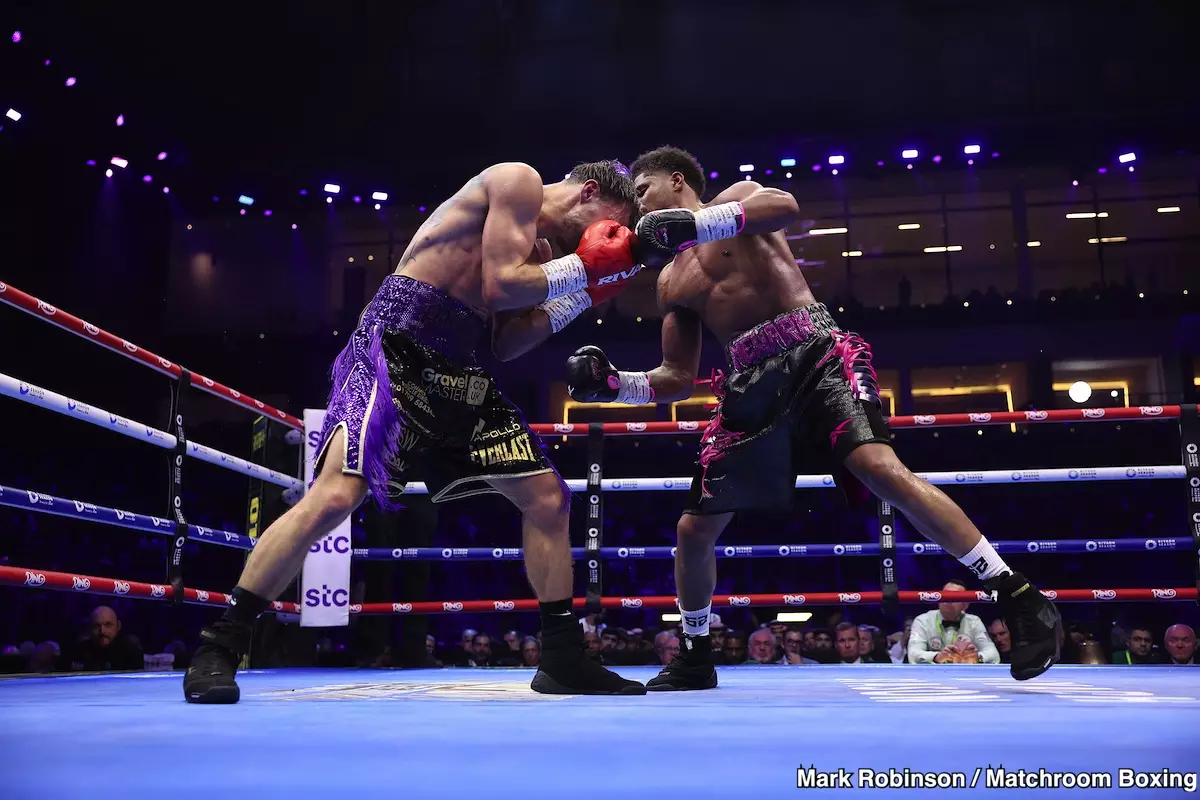In the world of boxing, the narrative surrounding a fighter often molds how they are perceived by fans and the media alike. Shakur Stevenson, an undefeated fighter with an impressive professional record, stands at a crossroads following his recent victory over Josh Padley in Riyadh. While Stevenson celebrated his successful title defense of the WBC lightweight championship, his performances and choice of opponents raise questions about his level of competition and the broader implications of his management decisions.
Stevenson’s victory by ninth-round technical knockout (TKO) against Padley was marked by his assertion that he “barely got touched.” This statement encapsulates his dominant performance but belies a critical issue: the caliber of his opponent. Padley, who came into the fight with limited experience and only one noteworthy bout against a well-regarded fighter (Mark Chamberlain), displayed a puzzling lack of readiness at such a level. While Stevenson’s boxing skills were on full display, the fight does little to answer questions about his ability to contend with truly elite competition.
Fighters need to be pushed to reach their potential, but the quality of opposition can stagnate growth when mismatched. The boxing world is littered with fighters who enjoyed smooth rides early in their careers, only to falter when the challenge finally arrived. Stevenson’s management and promotional teams bear the responsibility to curate a challenging lineup that ensures he not only wins but evolves as a fighter.
Stevenson’s own admission that he “didn’t watch [Padley] much” prior to the match raises eyebrows, suggesting a complacency on his part. In a sport where preparation is paramount, overlooking an opponent amounts to a significant oversight. Padley came into the bout attempting to put on a show and make a name for himself by achieving the seemingly impossible—defeating an undefeated champion. However, lacking the power and speed to truly challenge Stevenson, it became evident that Padley was out of his depth.
The mismatch raises questions not just about Padley, but also about the integrity of matchmaking. Stevenson claimed that he had no frustration when Padley wasn’t able to match his intensity, but this nonchalance reflects a broader issue: how willing are promotional companies to risk their investments against the talented fighters they manage? Protecting a fighter’s record may lead to a polished image, but it also contributes to a potentially hollow legacy.
As Stevenson continues his journey in the lightweight division, he faces pressure not only from within his camp but also from boxing enthusiasts who crave authenticity in competition. His previous four fights after moving up to lightweight seem to reveal a glaring pattern; with the only notable opponent being Edwin De Los Santos, it begs the question, “Who is next?” The consensus is clear: if Stevenson aims to grow into a legitimate elite, he must move beyond the likes of Padley.
Further complicating matters is the fallout from finding suitable opponents. The apparent snubbing of potentially challenging boxers, such as Cuban power puncher Jadier Herrera, has not escaped observation. If Stevenson’s team consciously avoided Herrera to preserve their fighter’s undefeated record, it might illustrate a fear of losing rather than an aspiration for greatness. This protective method risks rendering Stevenson more of a controlled athlete than a true contender capable of stepping into a ring with the best.
Stevenson now finds himself facing a dual-edged sword; while his talent is undeniable, the question of his readiness is suspect. By taking on lesser competition, he runs the risk of becoming stagnant; paramount to any hope for greatness is the necessity to fight and conquer opponents who present real challenges. As he reflects on his recent bouts and the experiences involved, Stevenson must prioritize pushing his own limits rather than basking in the comfort of easy victories.
This paradox leads to critical implications for not just Shakur Stevenson, but for fans and stakeholders in the sport of boxing. Should he continue to pick opponents who lack the necessary experience to pose a legitimate threat, the respect he garners within the sport will inevitably be altered. The thirst for true competition remains fierce, and if Stevenson wants to maintain his image as a top fighter, he must be willing to step into the ring with challengers who are not only hungry for victory but possess the tools to secure it. The boxing world is eagerly watching for his next move.

